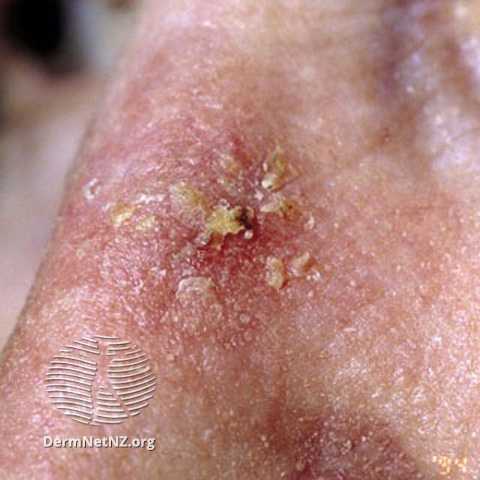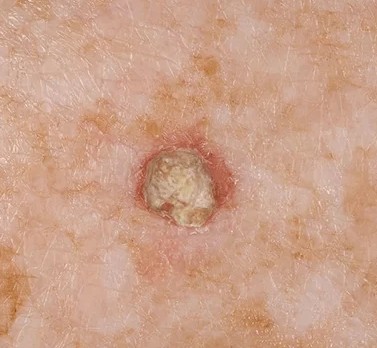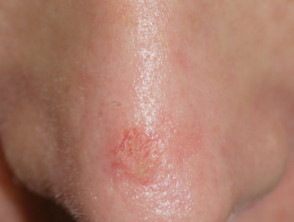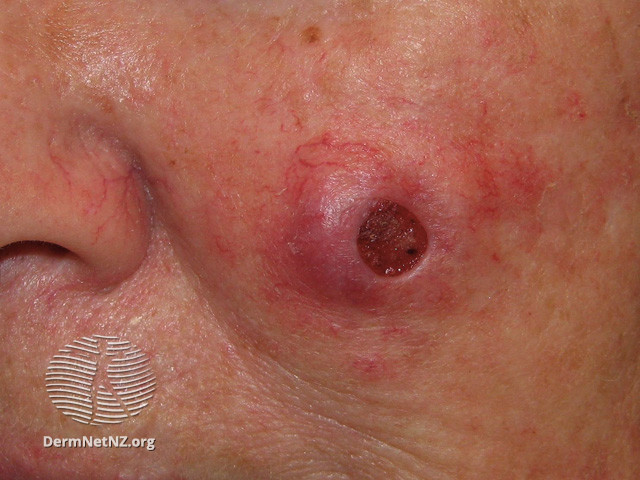
Squamous cell skin cancer has a variable look. It can look differently in different people and in different locations. But there are some common features you can learn to recognize with a little practice. The images below will help you know what to look for in a skin self-examination.
Actinic Keratoses
Actinic keratoses (ak-TIN-ik ker-uh-TOE-sees) are precursors to squamous cell carcinoma, so it’s important to recognize them. These precancers, also known as solar keratoses, are caused by sun damage. As shown in the pictures below, they often look like small, dry, scaly, or crusty skin patches. Their colour varies from dark tan to white to flesh-coloured, or they are a combination of colours. They have a rough texture that you can feel.



Squamous Cell Skin Cancer
The following are clinical images of squamous cell skin cancer. As you can see, squamous cell skin cancer presents in many different ways. While the nine photographs here are good representations, squamous cell skin cancer could look differently on you. That’s why it’s important to see a dermatologist on a regular basis and to become familiar with all the spots on your body. This way, you can notice new spots that are suspicious or changes in existing ones as part of an early-detection strategy.



